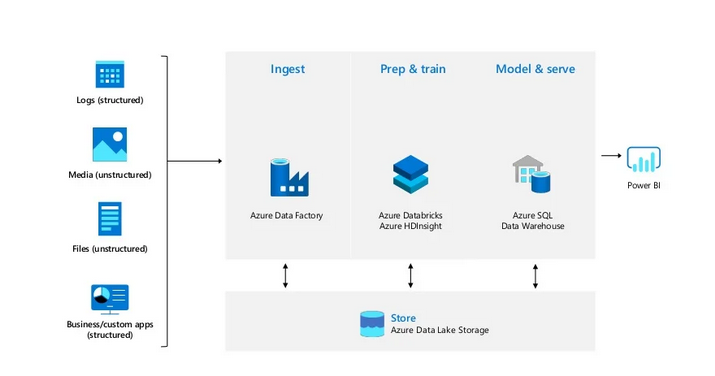What is Azure Data Warehouse?
Azure Data Warehouse is a cost effective solution for storing and analyzing big datasets. It can store up to 1 Petabyte of data and provide real time analytics. The best part is that it comes free with the subscription. So, if you are looking for a way to analyze large amounts of data without breaking your budget, then this might be a great fit.
If you need a tool for big scale data processing and analytics, then you can use the features of the Azure Data Warehouse. This is an important feature that most companies lack, but you don’t. This allows you to perform complex queries in order to answer the question “what am I doing right now?”.
You also have the ability to process multiple files into a single dataset. If you want to combine all of your information together, you can do so.

Azure Data Warehouse explanation
Azure Data Warehouse (ADW) is a cloud-based service that allows you to manage, query, analyze, and report on massive volumes of data. The service offers an enterprise-grade data management system with the flexibility and agility to meet your business needs. With Azure ADW, you can easily access, integrate, and transform data from any source, whether it is relational, columnar, or NoSQL. You can also perform complex queries using SQL, Python, R, Java, C\C++,.Net, and other languages.
Why Azure Data Warehouse Is Using?
Azure Database for PostgreSQL (DB2. offers a relational database management system that runs on Microsoft SQL Server. DB2 can be used to create databases, manage tables, insert, update, delete, retrieve, query, analyze, report, administer, and backup data.
In addition, the software can also run in the cloud, allowing you to access your information from anywhere.
What makes Azure Database for PostgreSQL so special is its ability to scale as needed. You can easily add more resources to the environment, including storage space and computing power. This means you can use the service at any time, without worrying about how much data you have or whether you need more capacity.
You don’t even need to worry about managing the server yourself. The Azure team will take care of that for you.
As a result, you’ll get all the benefits of the cloud, such as scalability, reliability, security, and cost-effectiveness.
Advantages of Azure Data Warehouse
1. The name of the service is Microsoft Azure Data Warehouse. It’s a cloud-based data warehouse that allows users to analyse big data.
2. It’s designed to be used by businesses. It’s a fully managed service. You don’t need to worry about installing and configuring the software, and it’s easy to scale up or down as your needs change.
3. It’s scalable and elastic. This means you can scale up or down as your needs change. You can also change the size of the cluster that it’s running on, and you can add more nodes to the cluster.
4. It’s highly available. This means it’s always up and running. If one of the nodes goes down, it automatically starts working again.
5. It’s integrated with SQL Server. You can use SQL Server to manage your data warehouse, and you can access it using SQL Server tools.
6. It’s secure. You can use a password to log in to the service, and you can protect your data by encrypting it.
7. You can use the service for free. It’s a fully managed service, so you don’t need to pay for it.
8. It’s easy to set up. You can easily create a data warehouse, and you can add new nodes to the cluster.
9. It’s easy to use. You can create a data warehouse, and you can analyse the data in it. You can also connect to it from other tools, such as Excel.
10. You can scale up or down as your needs change.
FAQ
1. What is Azure Data Warehouse?
Azure Data Warehouse (ADW) is an on-premises cloud-based service that provides a common platform for analytics and business intelligence. ADW allows you to analyze large amounts of data in real time and run complex queries against the data. It also enables you to create your own analytical apps using the data warehouse’s REST APIs.
2. How does ADW differ from Azure SQL Data Warehouse?
ADW is a self-service data warehouse service that is designed to make it easy for users to run complex queries against their data. The service is based on Microsoft’s SQL Server, so it offers all of the features and capabilities of SQL Server.
3. What are the advantages of ADW?
ADW has many advantages over SQL Data Warehouse, including: • Simple and easy-to-use interface • Self-service, no IT support required • On-premises deployment options • No software licenses required
4. What are the limitations of ADW?
ADW does not offer the same level of scalability and performance as SQL Data Warehouse.
5. What are the key features of ADW?
Key features of ADW include: • Self-service analytics • Real-time analytics • Query processing • Data management • ETL • BI • Security
6. What is the cost of Azure Data Warehouse?
There are two versions of Azure Data Warehouse. The first is a free version called Azure Data Warehouse Basic. The second is a paid version called Azure Data Warehouse Premium. Azure Data Warehouse Premium includes more features and functionality than Azure Data Warehouse Basic, and it also includes the ability to run SQL Server 2016, SQL Server 2014, and SQL Server 2012 queries against the data warehouse.
7. Where can I find more information about Azure Data Warehouse?
For more information, see Azure Data Warehouse.
8. What is the difference between Azure SQL Data Warehouse and Azure Data Warehouse?
Azure SQL Data Warehouse is an on-premises service that provides a common platform for analytics and business intelligence. Azure SQL Data Warehouse allows you to analyze large amounts of data in real time and run complex queries against the data. It also enables you to create your own analytical apps using the data warehouse’s REST APIs. Azure Data Warehouse is a cloud-based service that provides a common platform for analytics and business intelligence. Azure Data Warehouse allows you to analyze large amounts of data in real time and run complex queries against the data. It also enables you to create your own analytical apps using the data warehouse’s REST APIs.
Conclusion
In this post, we describe what Azure Data Warehouse is and how it can help you achieve data-driven insights. We’ll also provide a step-by-step tutorial on how to create a new Azure Data Warehouse.

